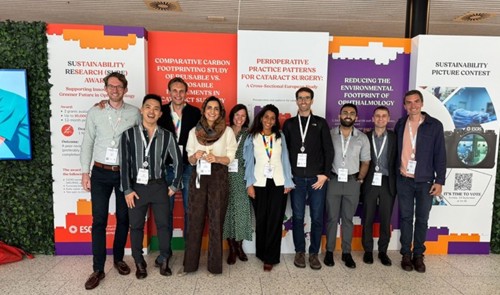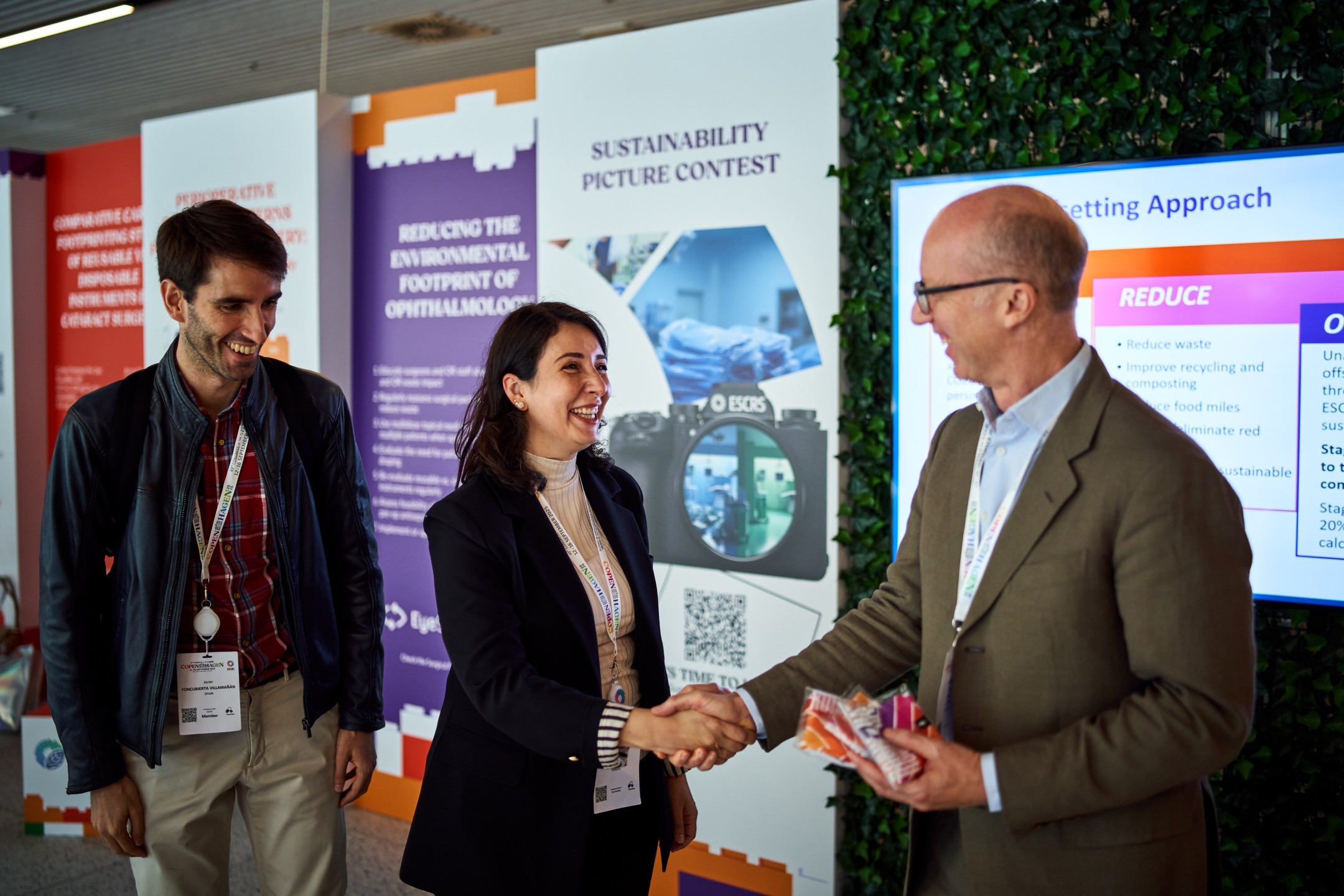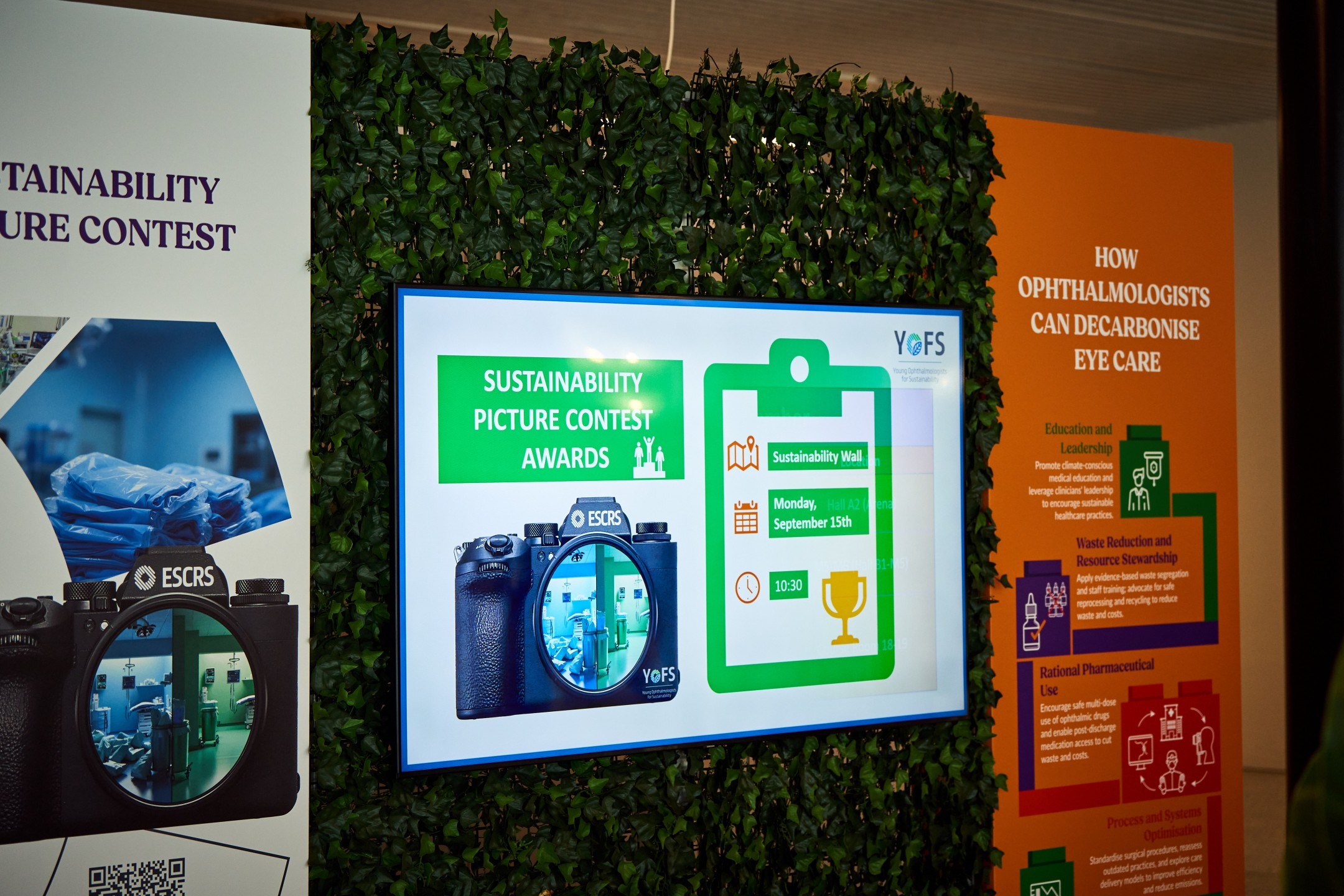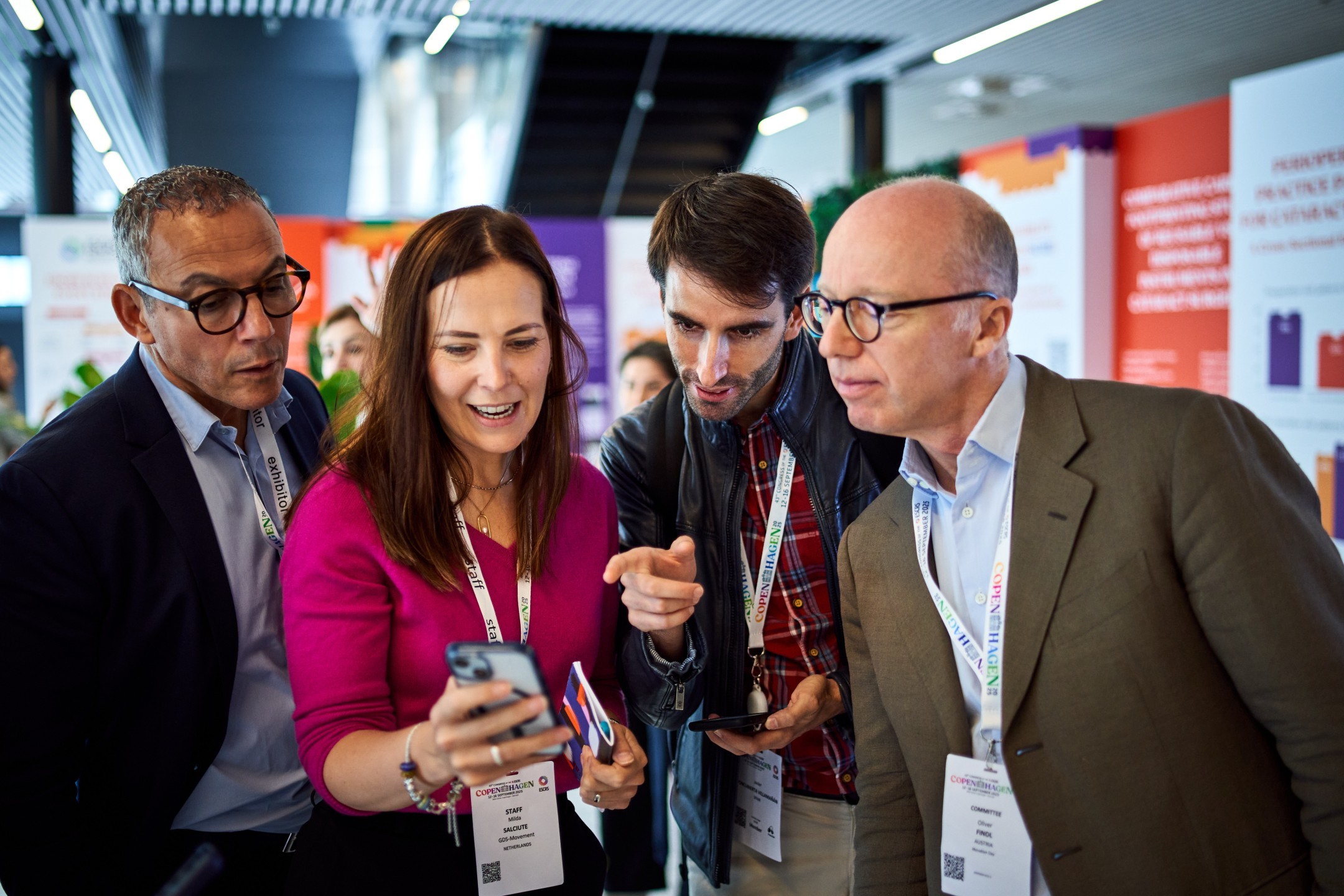Young Ophthalmologists For Sustainability (YOFS)
Your path to meaningful change starts here.
The YOFS' Mission
In 2022, the Young Ophthalmologists for Sustainability (YOFS) was founded, consisting of aspiring ophthalmologists from 10 countries.
Their collective mission is to create and implement initiatives geared towards enhancing sustainability within the field of ophthalmology. This is achieved through research, education, advocacy, and fostering collaboration.
Their primary focus is on devising and implementing initiatives geared towards enhancing sustainability within the field of ophthalmology. These initiatives revolve around waste reduction, research, education, advocacy, and fostering collaboration. The aim is to bring about lasting change in eye care provision for everyone in harmony with our planet.
For enquiries, please email: sustainability@office.escrs.org.
#StartNextMonday
A fresh lens was created by ESCRS Young Ophthalmologists For Sustainability (YOFS) to support Mission Zero and to raise the sustainability index of our daily clinical practice.
To ensure greater sustainability in operating theatres, we have developed 5 clear practices that can each have a vivid and positive impact without compromising patient safety. For the best effect, we suggest you focus on all of them and encourage your fellow surgeons to do the same.
Instead of running OR ventilation continuously (during the night and on weekends), which wastes electricity and increases carbon emissions that intensify climate change, switch the ventilation off outside of office hours. Studies show that this offers equal infection control to continuous use. Discuss this with the infection control team of your hospital or surgical center.1,2,3
Read Article: Operating Room Energy Savings Through Air Treatment Modifications4
If your hands are visibly dirty, a surgical scrub brush is the answer5 (needed before the first surgery of the day only). If they are not visibly dirty, studies show you don't need a brush to protect your patient from infection. An alcohol-based wash alone is sufficient6.

Studies show that face drapes are as effective as the much more wasteful full-body drapes. 7, 8, 9, 10.

Separate armrest covers create extra waste - instead you may use your gown. In cataract surgery, your back does not need to be sterile as it does not come into contact with surfaces, medical staff, or the patient. Try to leave the gown open at the back while still standing and cover the armrests with it when you sit. The gown is wide enough to include the armrests, without risk of contamination to others.

Eye shields have no beneficial effect on post-operative recovery after uncomplicated cataract surgery. Not using a shield has become common practice in many facilities throughout Scandinavia and the Netherlands11.

Main Symposium ESCRS 2023: Making Our Surgery Greener
Chaired by Oliver Findl and Rudy Nuijts, this conference session presentations included:
- Why does this matter? - Hugh Montgomery
- Frugal Innovation: lessons from low/middle income countries - Rengaraj Venkatesh
- Reducing OR Waste - Nicolas Winklmair
- Reuse and risk: what is the evidence? - David Chang
- What is industry doing? - Erin Powers
- Taking Action: What can I do now? - Sjoerd Elferink
YOFS Working Group

Sarah Schimansky UK - Chair
Sjoerd Elferink THE NETHERLANDS - Immediate Past Chair
Javier Foncubierta SPAIN
Johnson Neo UK
Arthur Ferrero FRANCE
Zeki Yigit Karaca TURKEY
Haidy Zakaria Soliman UK
Nicolas Winklmair AUSTRIA
Chiara Bonzano ITALY
Diana Silva PORTUGAL
Johannes Birtel GERMANY
Akanksha Bagchi UK
Casper Van der Zee THE NETHERLANDS
Sundas Maqsood UK
Muhammad Biadsy ISRAEL
Priyanka Pujara UK
Aishwarya Amarnath UK
Ghada Mohamed Ali Atta GERMANY
Research
Explore papers published by the YOFS:
- Kooistra, E. J., Golsteijn, L., van Bree, E. M., Elferink, S., Brakema, E. A., Hermeling, F., ... & Stobernack, T. (2022). The Environmental Impact of Cataract Surgery and Strategies for Mitigation: A Life Cycle Assessment in an Academic Hospital. Journal of Cataract & Refractive Surgery, 10-1097.
- Chang, D. F., Elferink, S., & Nuijts, R. M. (2023). Survey of ESCRS members' attitudes toward operating room waste. Journal of Cataract & Refractive Surgery, 49(4), 341-347.
- Yang-Seeger D, Neo YN, Findl O, Bagchi A, Elferink S, Birtel J. Perioperative Practice Patterns for Cataract Surgery - A Cross-Sectional European Study. J Cataract Refract Surg. 2025 Apr 10.
- Ong, A.Y., Buckley, T.M.W., Birtel, J. et al. Towards greener intravitreal injections: the Oxford Eye Hospital experience. Eye 39, 2489–2491 (2025).
- Foo, K., March, F., Elferink, S., & Gale, J. (2025). The carbon footprint of glaucoma care with drops or laser first. Clin Exp Ophthalmol, 2025 May-Jun;53(4):435-437.
Membership
ESCRS Membership for trainees/residents is free.
Please contact membership@escrs.org for more information or visit the become a member page to apply.

References:
- M. Dettenkofer et al. Shutting down operating theatre ventilation when the theatre is not in use: infection control and environmental aspects. Infect Control Hosp Epidemiol, 2003; 24:596-600A.
- Zarzycka Energy saving opportunities in operating theatres: a literature study. REHVA journal 2019
- Lans JLA, Mathijssen NMC, Bode A, van den Dobbelsteen JJ, van der Elst M, Luscuere PG. Operating room ventilation systems: recovery degree, cleanliness recovery rate and air change effectiveness in an ultra-clean area. J Hosp Infect. 2022 Apr;122:115-125. doi: 10.1016/j.jhin.2021.12.018. Epub 2021 Dec 30. Erratum in: J Hosp Infect. 2022 Nov;129:120. PMID: 34974079.
- Lans J, Traversari R, Brouwer A, Lako S. This article is a publication of iAM, further training concept for nurse anesthetists (November 2023). For more information, visit https://www.iamnaopleiding.nl.
- WHO Guidelines on Hand Hygiene in Health Care: First Global Patient Safety Challenge Clean Care Is Safer Care. 13.4.2 Use of brushes and number them accordingly.
- Javitt MJ et al. Association Between Eliminating Water from Surgical Hand Antisepsis at a Large Ophthalmic Surgical Hospital and Cost. JAMA Ophthalmol. 2020; 138: 382-386.
- Haripriya A et al. Changing operating room practices: the effect on postoperative endophthalmitis rates following cataract surgery .Br J Ophthalmol 2023: 780-785
- Winklmair N et al. Potential environmental impact of reducing the variation of disposable material used for cataract surgery. J Cataract and Refract Surg 2023: 49:628-634
- Chang DF et al. Survey of cataract surgeons’ and nurses’ attitudes toward operating room waste. J Cataract Refract Surg 2020; 46:933-940
- Chang DF et al. Survey report: survey of ESCRS members’ attitudes toward operating room waste. J Cataract Refract Surg 2023; 49: 341-347
- Lindfield et al. Shield or not to shield? Postoperative protection after modern cataract surgery. Eye 2011;25: 1659-1660



